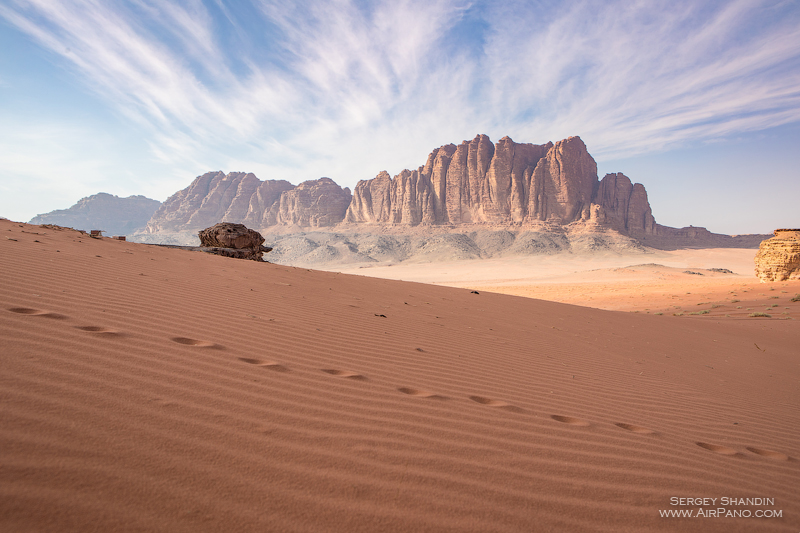Administration & Institutions
From Official Public Documentation
Conservation Projects
There are many conservation projects underway in the protected area to try and safeguard its unique landscape and ecology and to raise awareness among local people and visitors alike
- Ecological surveys have been carried out and are being used to monitor the populations of endangered animals like the Gray Wolf and Nubian Ibex.
- Ranger patrols are now in place and these are helping to enforce the protected area by-laws and reduce illegal hunting.
- The main tracks through the desert are being graded and rationalized to create one main network for tourist vehicles and thereby reduce the widespread damage to desert habitats caused by “free-for-all” driving
- A zoning scheme has been introduced to safeguard ecologically sensitive areas and make sure that visitors will always be able to have a wilderness experience.
- Small craft enterprises and other income generating projects are being developed to make the protected area more relevant to the lives local people.
- A large and impressive visitor centre has been opened to create a single gateway to the protected area that will enable all tourism activities to be well managed and coordinated.
- Leaflets, brochures and posters have been produced to explain to visitors the wonders of Wadi Rum and the need to behave appropriately in such a special site.
- Entrance fees have been introduced to raise income towards the ongoing management and care of the protected area
- Education and outreach programmes are being implemented to promote the importance of the protected area and encourage local communities and visitors to participate in its conservation.
Zoning Scheme
Wadi Rum has a zoning scheme to protect ecologically sensitive areas and ensure that a large part of the protected area keeps its wilderness character and remains as natural as possible. There are two zones in the scheme, a free access zone and a wilderness zone. Controls on visitor activities in the free access zone are minimal but in the wilderness zone there are limits on tourist and vehicle numbers and special events like marathons. Camping and climbing are also more restricted but access on foot or by camels and horses is encouraged.
Management Authority
Wadi Rum Protected Area is managed by a local area management, under the umbrella of the Aqaba Special Economic Zone Authority (ASEZA). There is an on-site management team of 52 people (June 2005), operating out of the visitor centre, most of whom have been recruited from local communities. This team includes a Site Manager and managers for tourism, research, socio-economic programmes, public awareness and administration. It also includes a Community Liaison Officer, who works to build closer working relationships with local people. There is also a government appointed Steering Committee responsible for overseeing the development of the protected area, which consists of all major stakeholders, including the local community.
The management programmes within the protected area are guided by a conservation management plan and a visitor management plan, which were developed by the Royal Society for the Conservation of Nature (RSCN), a well known national organisation. The Society was commissioned by ASEZA to prepare the plans and to recruit and develop the on-site management team under a World Bank assisted project that ran from 1998 to 2005.

